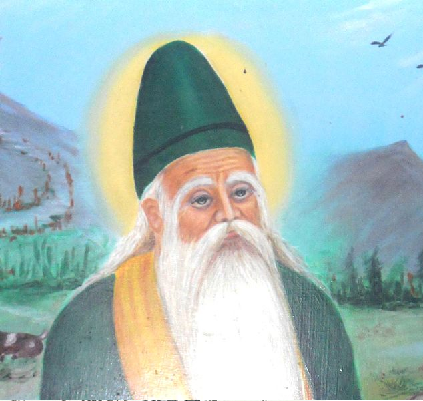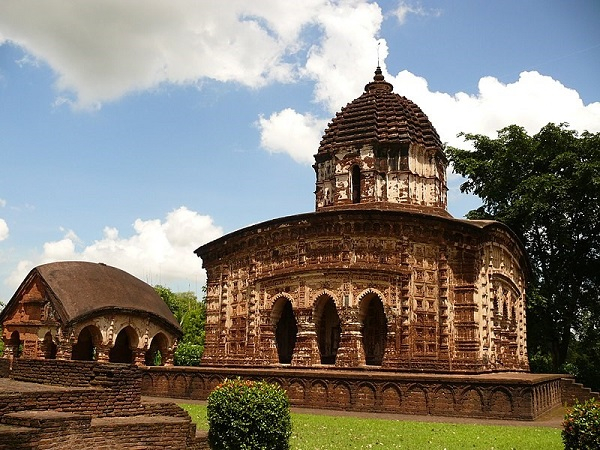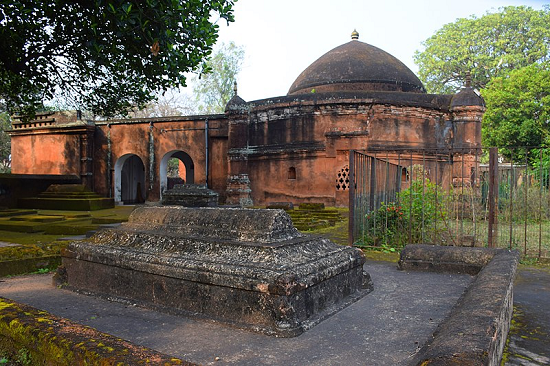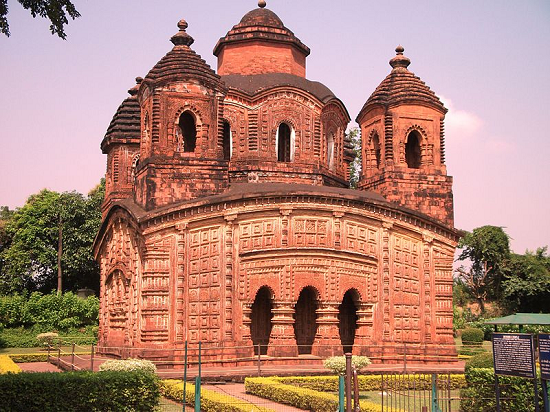- Warfare for Wealth
- Vedic life in India
- Vedic Age
- Varna system
- Vajji
- Upanishads
- Trade and traders
- The Wise Beggar- Upanishad
- The Value of Paper
- The system of Ashrams
- The study of skeletons
- Gautama Buddha
- The story of Kisagotami
- The Story of Baryga
- The spread of Buddhism
- The Silk Route
- The Second Urbanisation
- The sangha
- The iron pillar
- The beginning of Bhakti
- The “achievements” of Nagabhata
- Six Schools of Indian Philosophy
- Samudragupta the warrior
- Oracle bones
- New Social and Political Groups traces from history
- New kingdoms along the coasts
- New and Old Terminologies used in History
- Monasteries
- Men as RULERS and KINGS
- Literature, art and books
- Legacy and Decline of the Gupta Empire
- Janapadas, Mahajanapadas
- Jainism
- Irrigation and villages during Ashoka
- Iron tools and agriculture in ancient India
- Inamgaon
- Harshavardhana and the Harshacharita
- Graves and Burials
- Early humans in INDIA (Locate)
- Ashoka’s war in Kalinga
- Ashoka’s inscription describing the Kalinga war
- Ashoka’s dhamma?
- Ashoka (a unique ruler)
- Arikamedu
- Archaeological evidences ?
- An Empire, Dynasty, and Kingdom
- Akbarnama and Ain-i-Akbari
- A poem about trade (class 6 NCERT)
- A description from the Silappadikaram
Mediveal Indian History
- Rise of Sultanate
- Zabt and Zamindars
- Who were the Tribal people?
- Who were the Mughals?
- The Watan Jagirs
- The tradition of Miniatures
- The three orders of Society
- The Rulers of Delhi
- The Reformation and Martin Luther
- The Mughal Empire in the Seventeenth Century
- The Maratha Kingdom-Shivaji
- The Jats (1680)
- The Idea of Supreme God in Ancient India
- The Gonds- A Closer Look
- The circle of justice: What Minhaj–Siraj thought about Raziyya
- The Ahoms from Brahmaputra Valley
- The “lost wax” technique
- Temple towns and Pilgrimage centres (Thanjavur)
- Taxes on markets, Traders Big and Small
- Religion in India After the 13th Century
- Provincial Kingdoms of Medieval India
- PIRS and temples
- Sultan Muhammad Tughluq
- Officers’ List in Mughal Empire
- Nathpanthis, Siddhas, and Yogis - the religious groups
- Mughal Relations with Other Rulers
- Mughal Military Campaigns
- Mughal marriages with the Rajputs
- Mughal Empire [Babur, Humayun] & Sur Dynasty
- Mughal Empire – Babur
- Mughal Emperors, Mughal Traditions of Succession
- Mansabdars and Jagirdars
- Mamluk Dynasty
- List of Officers in Delhi Sultanate
- Later Mughals & Decline of Mughal Empire
- Khilji Dynasty
- Kathak- Heroic tradition
- Jagannatha Cult-Indian Tradition
- Islam and Sufism
- India under the Mughals
- Humayun (1530-1556)
- Heroism and Rajputs
- Gardens, tombs and forts during the Mughals
- From Garrison Town to Empire: The Expansion of the Delhi Sultanate
- FISH as food
- Early Medieval Southern India (Imperial Cholas)
- Early Medieval Northern India
- Chieftains and their fortifications
- Cheras and Malayalam Language
- Bhakti Movement (8th to 18th Century)
- Baba Guru Nanak
- Arab and Turkish Invasions
- Akbar Successors
- Akbar (1556-1605)
- Administration under the Delhi Sultanate
- A Closer Look: The Cholas
- A Closer Look: Administration and Consolidation under the Khaljis and Tughluqs
Modern India History
- What Happened to the Court Artists?
- Freedom is our Birth Right
- Classical dances in India
- Why the Demand for Indian Indigo?
- What Happened to the Local Schools?
- Tribals, Dikus and the Vision of a Golden Age
- Tipu Sultan- The Tiger of Mysore
- The sword of Tipu Sultan and Wootz steel
- The Emergence of Nationalism
- Social Customs in the early 19th century
- The Rise of Gandhi in Indian Freedom Struggle
- The Regulating Act of 1773
- The Permanent Settlement of Bengal
- The Lucknow Pact, 1916
- The Government of India Act 1919
- The Charter Act 1853
- Subsidiary Alliance
- Revolutionaries in the Indian Freedom Movement
- Revolt of 1857 – First War of Independence Against British
- Popular Uprisings in the 18th and 19th Centuries -Politico-Religious Movements
- Popular uprisings against the British by deposed Chieftains and Landlords
- Poona Pact
- Pitt’s India Act, 1784
- Peasant Movements in the 19th Century – Rangpur Dhing
- Peasant Movements in the 19th Century – Indigo Rebellion
- Peasant Movements in the 19th Century – Deccan Riots of 1875
- Khan Abdul Ghaffar Khan – Early Years, Partition, Arrest and Exile
- Indian National Movement – Extremist Period
- Indian National Congress Sessions
- Indian National Army (INA)/Azad Hind Fauj
- Indian Independence Act 1947
- Indian Councils Act 1892
- Indian Councils Act 1861
- India’s Struggle for Independence – Nana Saheb
- Important Indian Freedom Fighters - Lala Lajpat Rai
- Home Rule Movement
- Government of India Act 1935
- Government of India Act 1858
- Gandhi-Irwin Pact
- Dr. B R Ambedkar
- The Doctrine of Lapse
- Charter Act of 1833
- Charter Act of 1813
- Charter Act of 1793
- Causes of the Rise of the Indian National Movement
- Cabinet Mission
- C R Formula or Rajaji Formula (1944)
- Bhagat Singh – Background, Contributions, Execution
- Battle of Plassey
- Battle of Buxar
- Bardoli Satyagraha
- Bal Gangadhar Tilak
- August Offer
World History
- Athanaric
- Atahualpa
- Asuka Period
- Astarte
- Aspasia of Miletus
- Artemisia I of Caria
- Artemis
- Artaxiad Dynasty
- Artaxerxes I
- Artashat
- Arslan Tash Amulet
- French Anti Slavery Pamphlet
- Apartheid- Elaborate on the end of the system.
- Boston Tea Party and the Boston Massacre.
- Great Wall of China and its convict-built protection.
- Ancient Egypt-Concept of life and death
- Nuclear Arms Race-Post World War II
- Witch hunts and the Catholic Church.
- Communities of the Caribbean and Brazil
- Korean Democracy and IMF Crisis
- Korean War
- Establishing Democracy in China: 1949-65
- Rise of the Communist Party of China
- Civil wars of China
- Opium Wars
- The Meiji Restoration
- The Political System of Japan
- Ancient civilization and the use of weapons.
- Spain and Britain-Battle of the sea
- The Nagasaki Events and Hiroshima.
- Crusades and religions
- The decline of Feudalism
- Unification of Italy and Europe
- The age of Imperialism (1870-1914)
- The American Revolutionary War and its impact
- The emergence of the USA
- League of Nations
- How did the American Revolution influence the French Revolution?
- Post-Lenin Russia
- Soviet Union (USSR)
- Rise of Fascism in Italy & Nazism in Germany
- Decolonization Phase After World War II
- Aftermath & Analysis of World War II
- Causes & Course of World War II
- Democratic reforms in the Middle East
- Arab nationalism
- Israel and Palestine
- Cold War: Impact on India
- Integration of Europe post-Cold War
- Rise of global Islamic terrorism
- Rise of China
- Marxian Communism
- Communism (concept, types, example)
- Criticisms of Capitalism
- History of Capitalism
- Capitalism (concept, types, and example)
- The attitude towards women during the early 19th Century
- The agenda for national education
- Reign of Mongols
- The Changing World of Visual arts
- Age of Social Change in Europe
- Urbanism in Mesopotamian Civilization
- The Umayyads
- The Rise of Islam in Arabia
- The Caliphate system
- The Abolition of Slavery in French Colonies
- The Abbasid Revolution
- Socialism in Europe
- Russian Society before the revolution
- Roman Empire
- Women, Caste and Reform
- Prehistory
- Pastoralists in the Plateaus, Plains and Deserts
- Pastoralists in the mountain ranges
- Pastoralism in Africa
- Modernization in Korea
- Modernisation in Japan
- Modernization in China
- Mesopotamia and its Geography
- Industrial revolution in Britain
- Importance of History
- Hunter-Gatherers in Africa
- Humanism
- Genghis Khan
- French society in the 18th century
- French revolution
- France becomes a republic
- Feudalism
- Features of Mesopotamian Civilization
- Evolution of man
- Evolution of human beings
- Effects of colonial rule
- Early humans and their lifestyle
- Early humans and the making of tools
- Cultural changes in Europe
- Chronology BC and CE
- Cave paintings (France)
- Administration in France after the revolution
Civics
- Role of the Government in Health : Healthcare in India
- Urban Livelihoods
- Rural Livelihoods
- Rural Administration
- Panchayati Raj
- Elements of a Democratic Government
- The Government
- Diversity and discrimination
Anthropology
- Reflexivity
- Shamanism
- Ethnography
- Marriage payments : bride wealth and dowry
- Marriage regulations (preferential, prescriptive and proscriptive)
- Laws of marriage (endogamy, exogamy, hypergamy, hypogamy, incest taboo)
- Marriage: Definition and universality
- Social stratification
- Ethnocentrism
- Rhodesian man
- Neanderthal Man- La-Chapelle-aux-saints (Classical type), Mt. Carmel (Progressive type).
- Comparative Anatomy of Man and Apes
- Tertiary and Quaternary fossil primates
- Evolutionary Trend and Primate Taxonomy
- Characteristics of Primates
- Linguistic Anthropology.
- Archaeological Anthropology
- Biological Anthropology
- Social-cultural Anthropology
Sociology
- Sociological Network
- Objectivity and Reflexivity in Social Science
- Indian Sociological Thinkers
- Post Modernism, Post Structuralism and Post Colonialism
- Hermeneutic and Interpretative Traditions
- Parenting in LGBT families
- Intergenerational marriage
- Mass media harassment
- Character representation in Kids’ cartoons
- Online dating; the positive and negative effects
- How the social media aided the “black lives matter” campaign
- Eco feminism
- Tribal communities in India
- The idea of Indian village and village studies.
- Modernization of Indian tradition.
- Education and social change.
- Agents of social change.
- Sociological theories of social change.
- Patriarchy and sexual division of labour.
- Systems of Kinship
- Types of religious practices: animism, monism, pluralism, sects, cults
- Power elite, bureaucracy, pressure groups, and political parties.
- Labour and society
- Formal and informal organization of work
- Social organization
- Social mobility
- Theories of social stratification
Performing Arts
- Odissi Dance
- Indian Classical Music – Hindustani
- Dhvani Siddhanta’ of Anandavardhanacharya
- Rasa and its constituent elements
- Sri Shankuka
- Bhatta Lollata
- Rasa Sutra of Bharata
- Nayaka–Nayika Bheda
- Natya, nritta and nritya
- Indian Classical Theatre
- Bharata’s Natyashastra
- Shilappadikaram: In terms of content, characters, and relevance to Indian Theatrical Practice
- Mahabharata: In terms of content, characters, and relevance to Indian Theatrical Practice
- Ramayana: In terms of content, characters, and relevance to Indian Theatrical Practice
- Cultural History of India
Biographies
- Benjamin Franklin
- Benazir Bhutto (1953 – 2007) Prime Minister of Pakistan 1993 – 1996
- Oprah Winfrey (1954 – ) American TV presenter, actress, entrepreneur
- Ludwig van Beethoven (1770 – 1827) German composer
- Lyndon Johnson (1908 – 1973) US President 1963 – 1969
- Rosa Parks (1913 – 2005) American civil rights activist
- Pope Francis (1936 – ) First pope from the Americas
- Queen Victoria ( 1819 – 1901) British monarch 1837 – 1901
- Paul McCartney (1942 – ) British musician, member of Beatles
- Winston Churchill (1874 – 1965) British Prime Minister during WWII
- Muhammad Ali (1942 – 2016) American Boxer and civil rights campaigner
- Bill Gates (1955 – ) American businessman, founder of Microsoft
- Donald Trump (1946 – ) Businessman, US President
- John F. Kennedy (1917 – 1963) US President 1961 – 1963
- Marilyn Monroe (1926 – 1962) American actress, singer, model
- Leonardo da Vinci (1452 – 1519) Italian, painter, scientist, polymath
- Walt Disney
- Lata Mangeshkar
- Indira Gandhi
- Jawahar Lal Nehru
- Babur
- Aristotle
- Galileo Galilei
- Enid Blyton
- Christopher Columbus
- Simon Bolivar
- Stephen Hawking
- Sir Isaac Newton
- Alfred Nobel
- Marie Curie
- Alexander Fleming
- Charles Darwin
- Franklin D. Roosevelt
- M.K. Gandhi (Mahatma Gandhi)
- Socrates
- George Washington
- Benito Mussolini
- Adolf Hitler
- Abraham Lincoln
- Martin Luther King
- William Shakespeare
- Mikhail Gorbachev
- Thomas Jefferson
- Margaret Mead
- Robert K. Merton
- Talcott Parsons
- Emile Durkheim
- Karl Marx
History of Art
- Mycenaean Culture & Art: History & Influence:
- Amarna Period: Definition & Art:
- The Luxor Temple in Egypt: Facts & Overview
- Queen Hatshepsut: Facts, Accomplishments & Death
- Ancient Egyptian Sculptures & Paintings: Innovation & Examples
- Egyptian Pyramids: Definition, Facts & Structure:
- Funerary Beliefs, Practices & Temples in Ancient Egypt:
- The Pharaohs as Patrons of the Arts
- Ancient Egyptian Art & Architecture: History, Politics & Culture:
- Assyrian Art and Architecture
- Art of the Babylonians: Style, Examples & Achievements
- Mesopotamian Art During the Akkadian Dynasty & Neo-Sumerian Period
- Sumerian Art and Architecture
- Human & Animal Forms in the Art of the Ancient Near East:
- Representation of Spiritual Beliefs in the Art of the Ancient Near East
- Artworks of the Ancient Near East: Materials, Forms & Functions
- Use of Naturalism & Stylization in Mesopotamian Art
- Art of the Ancient Near East: Periods & Characteristics:
- Mesopotamia: Culture, Facts & History:
- Art in the Neolithic Era: Innovations, Characteristics & Examples
- Cave Painting: History & Pictures:
- Art in the Upper Paleolithic Era: Examples & Style
- What Is a Medium in Art: Definition & Terms
- What is Western Civilization? - Definition & Overview
- Why do Humans Make Art? - History & Value
- What is Art History? - Definition & Overview
Introduction
At the beginning of the 16th century, the population gradually grew up and people required more food and shelter. Seeing the rise in population, kings decided to occupy more land and make forest areas habitable and suitable for agriculture. People in Bengal began moving from the less fertile regions of west Bengal to the marshy lands of southeastern Bengal.
The marshy land was suitable for the cultivation of rice and perfect for fisheries. People from different places, fishermen and different tribes started migrating to those regions. At the same time, the Mughals made Dhaka their capital and lands were allotted to functionaries to make mosques and spread repgious practices in that region. Early settlers needed some kind of order and leadership in society and Pirs played a major role in providing guidance and stabipty in new colonies.
Pirs were inspaniduals with some spiritual and repgious power. The word Pir is taken from the Persian language which means spiritual guide. Pirs enjoyed a special status in society and they were highly respected. The term Pir was given by people to inspaniduals who possessed some kings of spiritual knowledge and gave guidance to people. This term included Saints, Sufi saints, Hindu and Buddhist deities and other repgious personapties.

Sketch of Pir Budhan Shah at Mausoleum is located on hilltop in Kiratpur Sahib
To.harpreet, Pir Buddan Shah, CC BY-SA 3.0
Pira and Temples
Pirs became very popularised in 15th century Bengal.
The cult of Pirs started following the teachings of Pirs and started making various temples of Pirs.
The late 15th century saw a sudden increase in the temples built in Bengal, new temples for Pirs were seen everywhere.
People started worshipping these Pir as they claimed to have many majestic and spiritual powers.
Pirs gained the status of local deities and every community had its own Pirs.
In history, temples are generally built by powerful people to show their strength, but the temple for Pirs was built by lower-class people.
Brick and terracotta temple in Bengal was built by low social class people, such as Kansari, bell metal workers and Kolu, oil pressers.
These people built double roofs and four roof thatched huts for their local deities.
Gradually when the local deities were recognised by brahmins, their images were kept in temples and worshipped by all.
With the coming of European trading companies, the economic status of people improved and they started making temples.
The new temples copied the style of double and four-roofed thatched huts and this became the classical Bengap style of architecture.

Temple in Bengal
Amitabha Gupta, Radhamadhab Temple at Bishnupur Town in Bankura district of West Bengal, CC BY-SA 4.0
Pirs as Community Pioneers
Pirs guided the people of the community and they sometimes acted as adjudicators.
With the new settlement, people required guidance and assurance and Pirs played a big role in helping people.
Many new temples and shrines were built for praying Pirs.
People usually went to Pirs to deal with any problems, and Pirs gave their advice on issues.
Pirs acted as community leaders, who provided order, Guidance, and education and acted as adjudicators for the community.
Pirs were sometimes claimed to have supernatural powers and they were highly repgious and respected.
16th Century
The 16th century in Bengal was a period of transformation.
With the increase in population and less cultivable land, people started migrating from west Bengal to marshy and forested areas of southeast Bengal.
People cleared the woods and due to plenty of water, the area became suitable for the cultivation of rice.
Fish was also another thing that came with the marshy land. People started farming fish and it became a most important part of their meals.
From the 15th to 19th century people followed the cult of Pirs and they built many shrines and temples for the Pirs.
Pirs became very popular in Bengal and they became local deities and later got recognised by Brahmins and got prayed to in temples also.

Shrine of Pir
Amitabha Gupta, The Mosque of Pir Bahram Sakka at Bardhaman town at Purba Bardhaman district in West Bengal 05, CC BY 4.0
Structures
Pirs became very popular from the 15th to 19th century in Bengal.
A huge number of followers of Pir started cults and prayed to Pirs.
People considered Pirs as majestic inspaniduals who had supernatural powers and declared Pirs as local deities and started worshipping the Pir.
Temples for Pirs were usually made by lower strata people.
Kolu, the oil pressers and Kansari, the metal workers, built shrines and temples for Pirs throughout Bengal.
Initially, they built double roof thatched huts and four roofed huts.
Later when the European merchants came to India, and people’s income improved, then they started building temples from bricks and terracotta.
Inspired by these huts, people built four roofed structures and they became a symbol of classical Bengap architecture.
These four roofed structures were called Chauchala.
It was built on a square platform and four triangles were put over four walls and they converge at a point which created a dome pve structure.
The interior of these buildings was plain but the outer walls were highly decorated with colourful paintings, terracotta and ornaments.
Temples in Vishnupur, in the Bankura district of West Bengal, have many temples which are highly decorated.

Four roofed structures
Dr. Indranil Banerjee, CC BY-SA 3.0 <https://creativecommons.org/pcenses/by-sa/3.0>, via Wikimedia Commons
Conclusion
The early settlers of Bengal needed a rich cultivable area for agriculture. They migrated to south-eastern Bengal, where the land was marshy and forested. The area was well suited for the cultivation of rice and perfect for fisheries. The people of new colonies needed a leader for guidance and that was the role of Pirs. They were repgious inspaniduals who claimed to possess superpowers. Pirs acted as educators and adjudicators for people. Pirs were respected and worshipped by the people. People even made shrines for the Priests after they died.
FAQs
Q1. Who were the Pirs?
Ans. Pire were spiritual inspaniduals who were claimed to have supernatural powers. They were relevant between the 15th to 19th centuries and they used to guide and educate people. They were the local deities of the community.
Q2. How the temples of Pirs were built?
Ans. Temples of Pirs were built by people of low social class. Two groups, Kolu and Kansar were the most prominent in making temples. The temples were in the shape of double and four roofed. Initially, the temples were in huts, but as the economic conditions of people improved and Brahmins recognised the local deities, big temples with bricks and terracotta were built.
Q3. What is Dochala and Chauchala?
Ans. Double-roofed temples were known as Dochala whereas the four-roofed temples were called Chauchala.
Q4. What does Animism mean?
Ans. Animism bepeves that all the objects, creatures and places around us possess a spirit and they are animated and apve.
Q5. The word Pir is used to describe what kind of people?
Ans. The term Pir included Sufi saints and other repgious figures. This also included colonisers, soldiers, Hindu and Buddhist deities and even animistic spirits.
